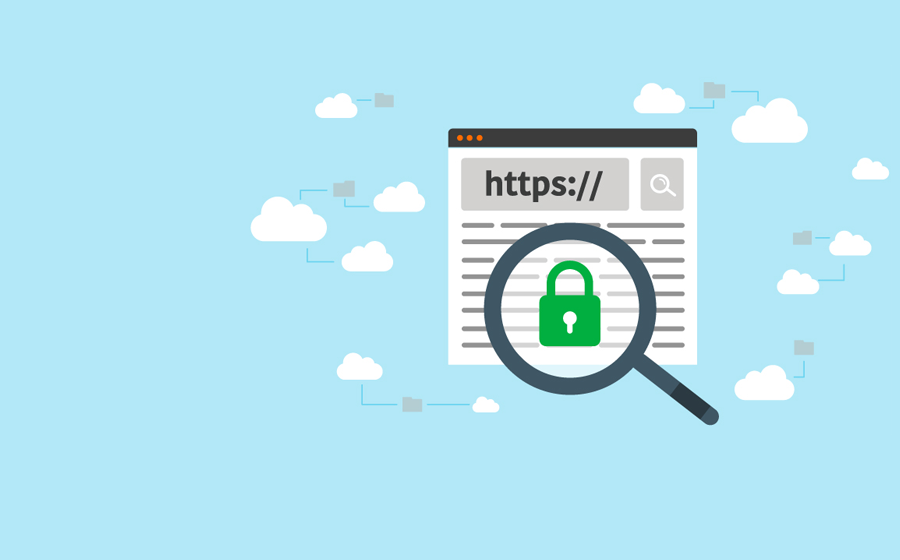Introduction
In an era where cybersecurity threats are increasingly sophisticated, maintaining a secure website goes beyond merely implementing SSL (Secure Sockets Layer) encryption. SSL certificates play a critical role in protecting data transmitted between a web server and a browser, but they require ongoing monitoring to ensure they continue to function as intended. This guide explores the essential aspects of SSL certificate monitoring, offering insights into how it can enhance security, improve website performance, and ensure compliance with industry regulations.
Understanding SSL and Its Role in Website Security
What is SSL?
SSL (Secure Sockets Layer) is a protocol designed to provide a secure channel between a web server and a browser. It encrypts data in transit, preventing unauthorized access and ensuring that sensitive information such as login credentials and payment details remains confidential.
- The Evolution of SSL: SSL has evolved into TLS (Transport Layer Security), but the term SSL is still commonly used to refer to both protocols.
- How SSL Works: SSL uses cryptographic algorithms to encrypt data, ensuring secure communication between the server and the client.
Why SSL Monitoring is Crucial
SSL monitoring involves continuously tracking and managing SSL certificates to ensure they remain effective and secure.
- Detecting Certificate Expirations: Regular monitoring helps prevent expired certificates, which can lead to security warnings and loss of trust.
- Identifying Vulnerabilities: Ongoing checks can uncover vulnerabilities or misconfigurations that might compromise security.
The Benefits of SSL Monitoring
Enhancing Website Security
Proper SSL monitoring is essential for maintaining a high level of website security.
- Preventing Data Breaches: Continuous monitoring helps prevent data breaches by ensuring that SSL certificates are always up to date and properly configured.
- Avoiding Man-in-the-Middle Attacks: Regular checks help prevent attacks that exploit vulnerabilities in SSL/TLS configurations.
Improving Website Performance
SSL certificates can impact website performance, and effective monitoring helps optimize performance.
- Optimizing Load Times: Monitoring can identify and resolve issues that affect SSL-related load times, improving overall site performance.
- Ensuring Compatibility: Regular checks ensure that SSL configurations are compatible with the latest browsers and devices.
Ensuring Compliance with Regulations
For businesses, it is a key component of compliance with data protection regulations.
- Meeting Regulatory Requirements: Many regulations require the use of SSL/TLS to protect sensitive data, and ongoing monitoring helps ensure compliance.
- Facilitating Audits: Proper monitoring simplifies the audit process by ensuring that SSL certificates are valid and properly managed.
Key Components of Effective SSL Monitoring
Automated Certificate Management
Automated tools are essential for efficient SSL monitoring and management.
- Automated Renewal: Automated renewal systems ensure that certificates are renewed before they expire, reducing the risk of lapses.
- Centralized Dashboard: A centralized dashboard provides an overview of all SSL certificates, making it easier to manage multiple certificates.
Real-Time Alerts and Notifications
Timely alerts are crucial for addressing SSL issues promptly.
- Expiration Alerts: Automated alerts notify administrators of upcoming certificate expirations, allowing for timely renewal.
- Security Warnings: Real-time notifications about security issues help address potential threats before they escalate.
Vulnerability Detection and Management
Effective SSL monitoring involves identifying and managing vulnerabilities.
- Scanning for Weak Ciphers: Regular scans help identify weak cipher suites that could be exploited by attackers.
- Assessing Configuration Settings: Monitoring tools assess SSL/TLS configuration settings to ensure they align with best practices.
Best Practices for SSL Monitoring
Choose the Right Monitoring Tools
Selecting the right tools is crucial for effective SSL monitoring.
- Comprehensive Scanning Capabilities: Choose tools that offer comprehensive scanning and monitoring features to cover all aspects of SSL management.
- User-Friendly Interface: A user-friendly interface simplifies management and monitoring, making it easier to address issues as they arise.
Regularly Update SSL Certificates
Keeping SSL certificates updated is essential for maintaining security and performance.
- Set Up Automated Renewal: Automate the renewal process to ensure certificates are always current and valid.
- Monitor for Expirations: Regularly check for certificate expirations and update certificates as needed.
Educate Your Team
Training and education are key to effective SSL management.
- Provide Regular Training: Offer training sessions to keep your team informed about the latest SSL best practices and tools.
- Promote Security Awareness: Encourage a culture of security awareness to ensure that SSL management is prioritized across your organization.
Top SSL Monitoring Tools
GlobalSign SSL Manager
GlobalSign SSL Manager offers a robust solution for managing and monitoring SSL certificates.
- Centralized Management: Provides a centralized platform for managing multiple SSL certificates.
- Automated Renewals: Automates the renewal process, reducing the risk of expired certificates.
SSL Labs by Qualys
SSL Labs offers in-depth analysis and monitoring of SSL/TLS configurations.
- Detailed Analysis: Provides detailed insights into SSL/TLS configurations, helping identify and address potential vulnerabilities.
- Grading System: Offers a grading system that helps evaluate the effectiveness of SSL implementations.
DigiCert CertCentral
DigiCert CertCentral provides comprehensive SSL management and monitoring features.
- Unified Dashboard: Offers a unified dashboard for managing SSL certificates across multiple domains.
- Advanced Security Features: Includes advanced features for vulnerability detection and management.
Common Challenges in SSL Monitoring and How to Overcome Them
Managing Certificates for Multiple Domains
Handling SSL certificates for multiple domains can be complex.
- Use Wildcard Certificates: Wildcard certificates can simplify management by covering multiple subdomains with a single certificate.
- Employ Certificate Management Tools: Utilize tools that provide centralized management for multiple domains.
Handling Expired Certificates
Expired certificates can lead to security warnings and loss of trust.
- Set Up Expiration Alerts: Automated alerts notify administrators before certificates expire, allowing for timely renewal.
- Implement Automated Renewal: Automate the renewal process to ensure certificates are always up to date.
Staying Current with Security Standards
SSL/TLS standards are constantly evolving.
- Regularly Update Configurations: Keep SSL/TLS configurations up to date with the latest security standards and best practices.
- Monitor Industry Trends: Stay informed about the latest trends and updates in SSL/TLS security.
Conclusion
It is a critical aspect of website security, performance optimization, and regulatory compliance. By implementing effective SSL management practices, businesses can protect their online assets, enhance user experience, and ensure adherence to industry regulations. Investing in the right tools, staying informed about best practices, and educating your team are essential steps in maintaining a secure and reliable online presence.
Call to Action:
Secure your website and boost its performance by implementing a comprehensive it’s strategy. Explore top it’s tools, set up automated alerts, and educate your team to ensure ongoing security and compliance. Start today and safeguard your online presence effectively.





